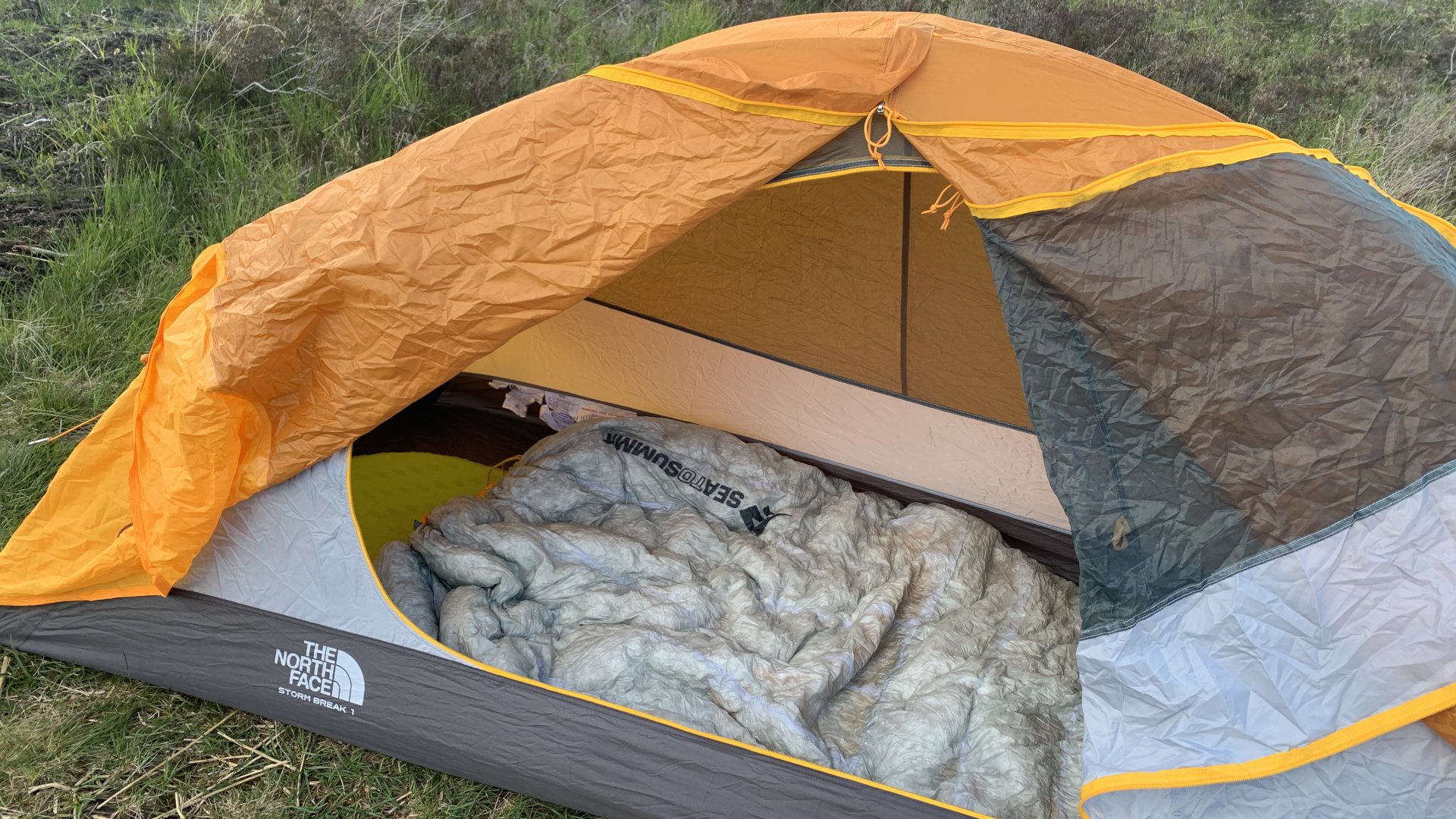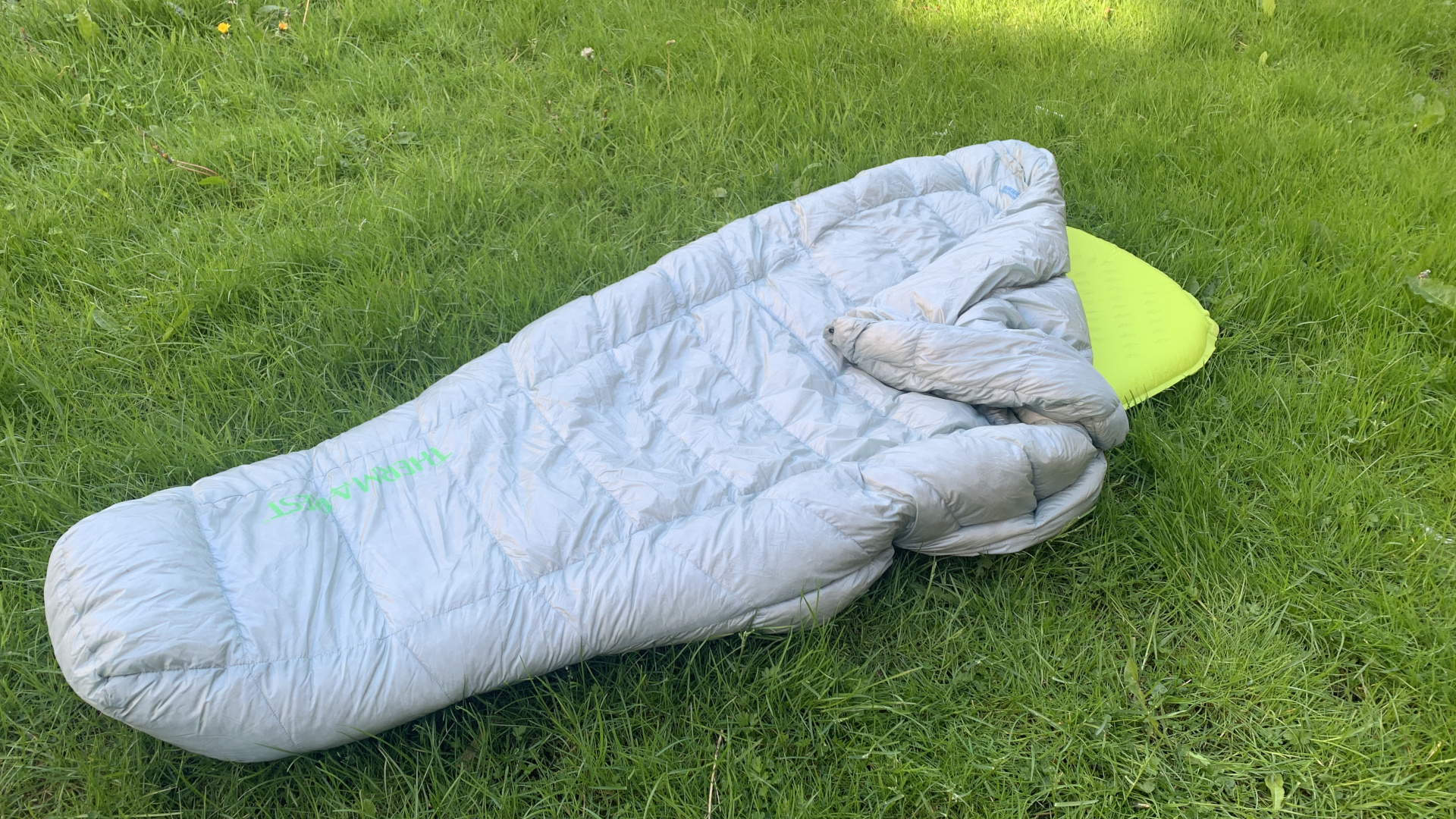After camping with this piece of gear, I’m never using a sleeping bag again – 3 reasons why I'm not going back
I never thought I’d see the day when I’d forego my trusted sleeping bag

Sleeping bags are kind of an essential camping item, I’m sure you’ll agree. After a long day of hiking with a heavy backpack, there’s nothing better than crawling into a cozy sleeping bag, zipping it up and drifting off under the stars.
As a frequent camper, I never thought I’d see the day when I’d forego my trusted GoLite sleeping bag that’s kept me warm all over the Rocky Mountains and some of America’s best National Parks – but over the last couple of years, that’s exactly what has happened.
Two summers ago, I got my hands on the Sea to Summit Ember II Down Sleeping Quilt to test out on my nocturnal adventures. If you don’t know, a camping quilt typically has no zip or hood, but it provides more protection than a simple camping blanket. It is made using the same fabric and insulation as a sleeping bag and has a foot box that encloses around the bottom of your sleeping pad, while some have straps that wrap around the pad too.
After making sure I was happy with mine while camping near home on the banks of Loch Lomond, I took it on a thru-hike of the West Highland Way and I loved it. Since then, I’ve camped through all four seasons in several different countries and used it every time. I even lent it to a friend who was traveling to India for a month and wanted to keep her bag light but needed to feel confident she’d have enough insulation at altitude.

Honestly, I don’t think I’ll ever go back to using a traditional sleeping bag, unless I’m heading to the Arctic where some serious protection is needed. I have the 35°F version, which you can still find using the link at the end of this article, while these days the Aussie company makes it in 30°F/45°F and regular and long.
Curious? Here are three reasons why I love my camping quilt more than my sleeping bag, and why you might want to try one too.
1. It saves on weight and valuable space
Because a camping quilt has less material than a traditional sleeping bag, no hood and no zip, it should come as no surprise that it’s way lighter. This may not matter to you if you’re a dedicated car camper (though I recently wrote about bringing mine car camping too, and I still prefer it), it’s a huge deal if you’re backpacking or traveling.
Advnture Newsletter
All the latest inspiration, tips and guides to help you plan your next Advnture!
I’m not talking about saving an ounce or two either – my camping quilt is literally half the weight of my sleeping bag, which itself is quite light at only 2.3 lbs, and packs down to half the size as well. Whether I’m backpacking or traveling by plane or train for an active adventure, it means there’s plenty of room for all my gear and my bag is easy to wrestle into an overhead locker or haul up a mountain.

2. I can better regulate my temperature
When you think about camping, you might understandably be worried about staying warm enough at night and having lived at high altitude for many years, I appreciate that. For people like myself who camp in different seasons and climates, however, it’s just as common to wake up too hot as it is to feel cold, so what I really want is insulation that helps me regulate my temperature so I’m not spending half the night pulling on extra clothes and the other half unzipping my bag.
In researching camping quilts and sleeping bags, one of the important things I’ve learned is that since most insulation works by trapping air, when the weight of your body is pressing down on your sleeping bag, there isn’t much air to trap. In fact, most of the insulation is being provided by your sleeping pad anyway, so that layer of fabric that’s missing from a quilt usually isn’t essential.
Furthermore, my quilt has both a foot box and optional straps to cinch it tightly around my pad, so even when I did some unusually cold early spring camping in Yosemite National Park a couple of years ago, I was able to stay quite snug, just pulling on a beanie hat and wool socks to stay warm. Meanwhile, when I was camping in warm weather this summer, the fact that I wasn’t cocooned meant my sleep system was much more breathable and I wasn’t overheating while my tentmate in a sleeping bag was.

3. I’m actually comfortable in any position
I might love camping, but like anyone else I can struggle to get comfortable at night, especially when I’m spending multiple nights in a row out in the wild. Sure, it’s partly to do with sleeping on the hard ground, but my Therm-A-Rest ProLite Apex sleeping pad is really pretty plush.
It turns out that the biggest obstacle for me is that, as a somewhat dynamic sleeper, I have a hard time finding a comfortable position when I’m swaddled inside a bag. My legs are bound together and if I free my arms they get cold, and there always seems to be a cold, hard zip in my face.
Not with my camping quilt, however. Because it doesn’t restrict my limbs, I’m free to sleep in all of my favorite positions – starfish, freefall, on my side – without having to wake up and reorganize my entire sleep system. There’s no annoying zip and nothing to keep me from sleeping in whatever position I want. Well, except for my tentmate that is.
Julia Clarke is a staff writer for Advnture.com and the author of the book Restorative Yoga for Beginners. She loves to explore mountains on foot, bike, skis and belay and then recover on the the yoga mat. Julia graduated with a degree in journalism in 2004 and spent eight years working as a radio presenter in Kansas City, Vermont, Boston and New York City before discovering the joys of the Rocky Mountains. She then detoured west to Colorado and enjoyed 11 years teaching yoga in Vail before returning to her hometown of Glasgow, Scotland in 2020 to focus on family and writing.

